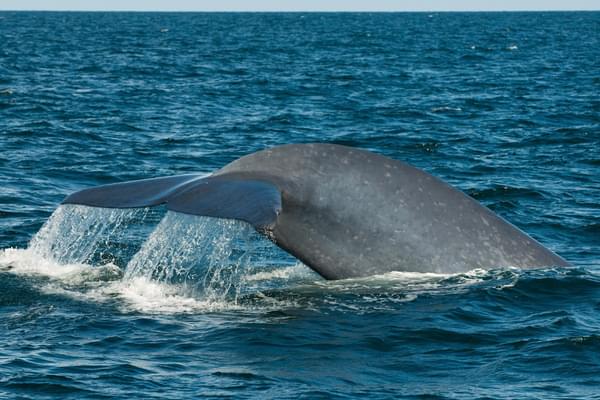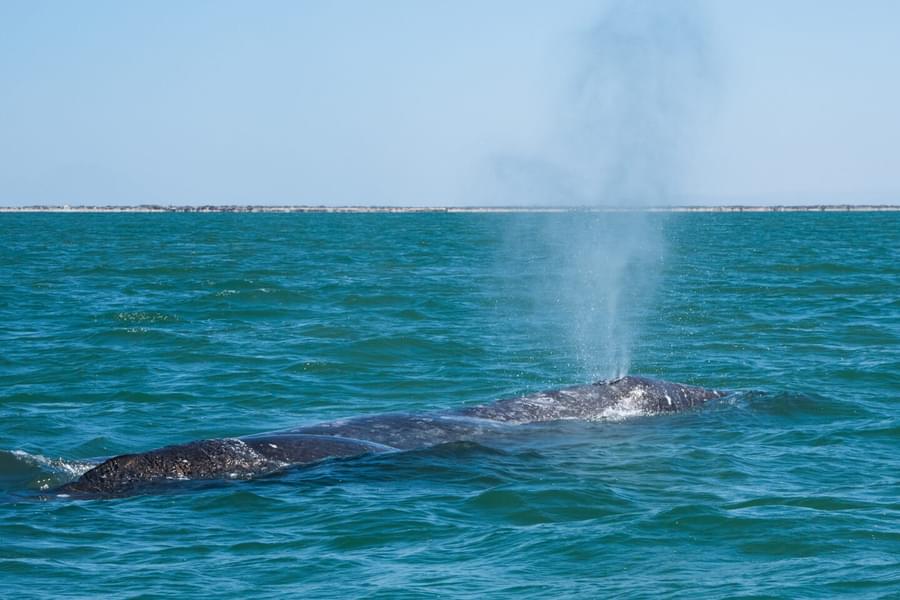A 40-foot-long gray whale was found dead this week on the shore at Ebey’s Landing in Washington State, the latest in a series of strandings that have raised fresh concerns among scientists and marine conservationists. The adult female had a broken jaw, visible damage to her tail, and blood around her mouth. The cause of death remains undetermined, and samples have been taken by the Washington Department of Fish and Wildlife for analysis.
This whale is one of 47 gray whales reported stranded along the U.S. West Coast so far in 2025. Six washed ashore in the San Francisco Bay Area in just the past week alone, bringing the regional total there to 19 which is a significant increase compared to previous years. Additionally, over 30 gray whales have entered the Bay so far in 2025, compared to just six during the same period last year. Many of them appeared malnourished or disoriented.
Marine scientists say the incidents reflect broader, ongoing challenges facing the eastern North Pacific gray whale population. Once considered a conservation success story, the population, which migrates annually between Mexico and the Arctic, has dropped to an estimated 13,000 individuals, down from more than 27,000 a decade ago. This is the lowest estimate since the 1970s.
Reproduction rates have also sharply declined. According to NOAA Fisheries, only 85 gray whale calves were recorded migrating past Central California earlier this year, the lowest number since systematic counts began in 1994. Calf production has remained consistently low since 2019, when a prolonged “Unusual Mortality Event” (UME) was declared in response to an increase in strandings and a noticeable drop in overall body condition among gray whales.
Although that UME officially ended in 2023, the latest population estimates and stranding data suggest that the gray whales have not recovered. Scientists link the decline to environmental changes in the Arctic and Subarctic feeding grounds, which provide essential nutrition for the whales during their long migrations. Reduced prey availability has been identified as a key factor contributing to malnutrition, lower birth rates, and increased mortality.
Dr. David Weller of NOAA’s Southwest Fisheries Science Center said the long-term data indicate this downturn may be more serious than previous population fluctuations. “The most recent Unusual Mortality Event was longer and more severe than the one observed in 1999–2000,” he noted. “Environmental changes may now be occurring at a rate that challenges the gray whales’ historic resilience.”
The migration route of these whales passes through rapidly changing ecosystems, including the California Current and the Arctic, both of which have experienced warming, prey redistribution, and increased human activity such as shipping and noise pollution.
Researchers continue to monitor the situation closely. While some of the stranded whales appear emaciated, others show signs of blunt-force trauma, raising the possibility of ship strikes or other human-related causes. Members of the public are being urged to report sightings of distressed or dead whales and to follow guidelines to reduce vessel disturbance in known whale migration corridors.
Gray whale photo credit: Terry Carne

The only way we can protect whales and dolphins is by understanding their distribution, and so monitoring is vital for effective conservation. Donate today to help ORCA continue to identify and study important whale hotspots around the world by visiting www.orca.org.uk/donate

